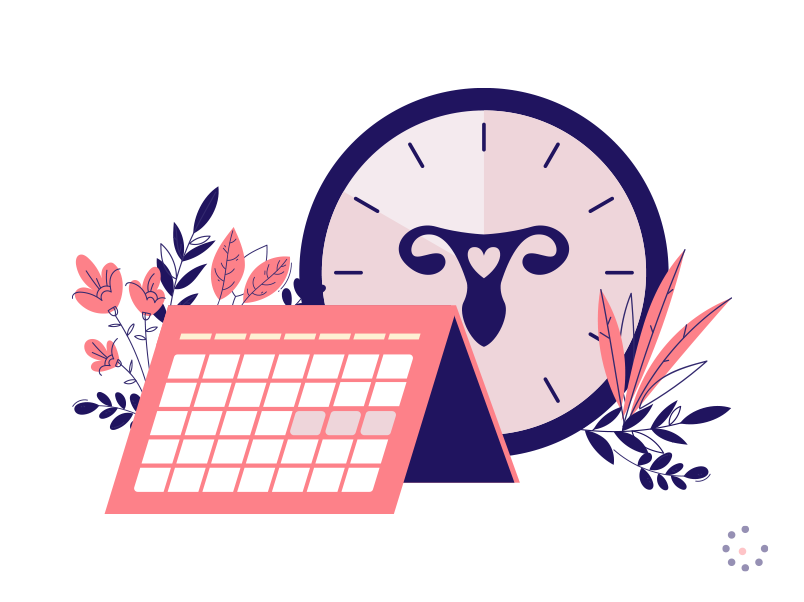blog tambre
Mapping the window of implantation by understanding the menstrual cycle

Table of contents
As we have been explaining in previous articles, there is an important concept in fertility called the ‘window of implantation’. Its understanding and identification can help, like all information, to better understand the treatment being carried out and its possible results, and also to face the process in a different way. Let’s get to it!
How much do you know about women’s physiology?
When a woman is born, she has all the eggs she will ever have in her lifetime, which are approximately 2 million. It should also be kept in mind that at no time are new eggs ‘created’, and that some 400,000 will cease to exist after puberty. This stage is marked by the arrival of a woman’s fertile phase, characterised by the reactivation of the gonadotrophin release system, the maturation of the genital apparatus, bone growth, the ability to be fertile as well as the development of secondary sexual characteristics.
Also at puberty, which is the period ranging ages 10-16, the first menstruation should appear, bringing us to the next section, which focuses on knowing a little more about the famed, but sometimes unknown, menstrual cycle.
First phases of the menstrual cycle
In order to learn about the menstrual cycle, it is necessary to understand that the follicle-stimulating hormone (FSH) and luteinising hormone (LH) are produced in the brain, specifically in the pituitary gland, which is stimulated by the production of GnRH (gonadotropin-releasing hormone) from the hypothalamus. FSH and LH stimulate the ovaries, which, by producing oestrogen and progesterone, will act on the development of the endometrium.
The menstrual cycle begins on the first day of menstruation and has a standard length of 28 days, although it can last from 21 to 35 days and be slightly different each month.
Menstruation marks the beginning of the follicular phase, during which oestrogen and progesterone levels are low. This triggers the breakdown and shedding of the top layers of the uterine lining. In this phase, FSH increases slightly and causes several follicles (i.e., the ‘pouches’ where the eggs develop) to be forms. As the follicular phase progresses, the FSH concentration decreases and a dominant follicle remains in development, gradually producing oestrogen.
The menstrual cycle: ovulation and luteal phase
The ovulatory phase begins with a surge of LH and FSH hormones. The Luteinising hormone triggers the release of the egg, known as ovulation, which usually occurs between 16 and 32 hours after the aforementioned surge. During this period, oestrogen levels peak, and progesterone begins to rise.
The last phase to understand is the luteal phase, when LH and FSH levels decrease. The follicle that released the egg in the previous phase closes and forms a structure called the corpus luteum, which produces progesterone. Oestrogen levels remain high throughout most of this phase.
It should be noted that both progesterone and oestrogen contribute to the thickening of the uterine lining, preparing it for the possible implantation of the fertilised egg. If the egg is not fertilised, the corpus luteum then degenerates and stops producing progesterone. In turn, oestrogen levels decrease, which causes the shedding of the upper layers of the uterine lining and the onset of menstruation, leading to the start of a new menstrual cycle.
If the egg is fertilised and pregnancy begins, the corpus luteum continues to function during the early stages of pregnancy, contributing to its maintenance.
Fertilisation and implantation
As mentioned above, having reviewed the phases of the menstrual cycle, it will be much easier to understand the concept of the window of implantation, as knowing when and how ovulation occurs is crucial.
In a woman’s menstrual cycle, ovulation usually occurs around day 14, although the accuracy may vary from woman to woman and depending on the length of individual cycles. During this process, the ovary releases an egg that travels into the fallopian tube, where it waits to meet sperm cells for possible fertilisation.
It is key to note that the egg has a relatively short lifespan of approximately 24-48 hours, while sperm can survive in the female reproductive tract for a longer period, up to 72 hours, or even longer.
If fertilisation is successful, the fertilised egg leads to an embryo that continues to divide as it travels through the fallopian tube towards the endometrium. Implantation of the embryo usually occurs around days 6 to 9 after ovulation, marking the beginning of a possible pregnancy.
The window of implantation
The window of implantation is known as the period in which the endometrium is in the best condition for embryo implantation to take place, i.e., the time when the endometrium is most receptive. This stage is short and depends on the effect of oestrogen and progesterone on the uterine lining.
The fertile window corresponds to the possible ovulation days, as chances of getting pregnant are highest 2-3 days before and 2 days after ovulation.
Recognising ovulation is easy for women who have very obvious symptoms at this stage, such as abdominal pain, increased libido, the appearance of a clear vaginal discharge and an increase in the amount of discharge, as well as something that can be measured: an increase in basal temperature.
We can also identify ovulation, and therefore obtain information about the window of implantation, through ovulation tests, which are performed on a urine sample and detect the LH rise that occurs 24 to 48 hours before ovulation.
If the objective of trying to find the window of implantation is to get pregnant and, after 6 months of trying naturally, this was not the outcome, seeking reproductive advice from a professional should be considered. Those of us who are dedicated to assisted reproduction have vast experience and rely on a large number of diagnostic tests, such as endometrial receptivity tests, which can help to personalise your case and achieve your goal of having a baby.
